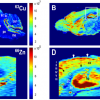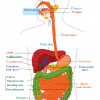Merry Christmas to Hemophilia Patients
Gene therapy is a technique that offers the potential to replace defective copies of genes in any genetic disease with an intact version. While the idea of this treatment sounds alluring, the actual practice of it is a whole other story. There are a few drawbacks to this technique that must be considered, including the potential risk of an immune response because the gene is inserted with the use of a virus, which the immune system will see as foreign. Also, most patients so far have needed multiple treatments over the course of their lifetime, estimating to cost much more than anyone can afford. Taking this all into consideration, we can only hope that through collaborations with many researchers that the technique can be refined in the future to prevent such drawbacks and prove to be novel approach to genetic disease.
 This has recently been reported for patients with Hemophilia B. Hemophilia B, also known as Christmas disease, is due to a deficiency of the clotting factor IX (FIX). The first reported case of Hemophilia B due to a decrease in FIX was in 1952, and was called “Christmas Disease” after the first patient diagnosed was named Stephen Christmas. Without this clotting factor, the blood does not form clots and results in severe bleeding episodes, especially in the joints and muscles.
This has recently been reported for patients with Hemophilia B. Hemophilia B, also known as Christmas disease, is due to a deficiency of the clotting factor IX (FIX). The first reported case of Hemophilia B due to a decrease in FIX was in 1952, and was called “Christmas Disease” after the first patient diagnosed was named Stephen Christmas. Without this clotting factor, the blood does not form clots and results in severe bleeding episodes, especially in the joints and muscles.
Bettert reatment for this disorder began back in the 1960’s where they would inject FIX concentrates into the blood of patients with hemophilia B. This increased the average age of death of 24 to a median lifespan of 63 years of age. So with the success of the protein therapy, why try to fix the genes? With each treatment costing $150,000 to $300,000, a patient needing clotting factors for hemophilia could incur a lifetime cost of $20 million.
So there needs to be a way that a patient can have a more effective treatment option that will cost less. This new treatment option offers some hope. Using a new virus for the administration of the gene, patients have seen an increased production of FIX protein for longer periods of time, and were able to stop or decrease the amount of concentrate injections they would need. With one injection of the virus only costing about $30,000, dramatic cost savings have already been seen. While this does offer new hope for the treatment of clotting disorders, follow-up with a larger number of patients and for longer periods of time will be needed to fully weigh the benefits and risks of this technique. Once this has been done, hopefully we will see gene therapy used more in practice and maybe even for more than just clotting disorders.
Ponder, Katherine P. Merry Christmas for Patients with Hemophilia B. The New England Journal of Medicine 10.1056; December 10, 2011. Nathwani A.C., Tuddenham E.G.D., Rangarajan S., et al.
| Print article | This entry was posted by Jennifer Galasso on December 15, 2011 at 4:01 pm, and is filed under Your Genes, Your Health. Follow any responses to this post through RSS 2.0. You can leave a response or trackback from your own site. |










about 13 years ago
this is just a tip of an iceberg whats gonna happen more and more can only be expected from gene therapy. i am the first one to comment here.